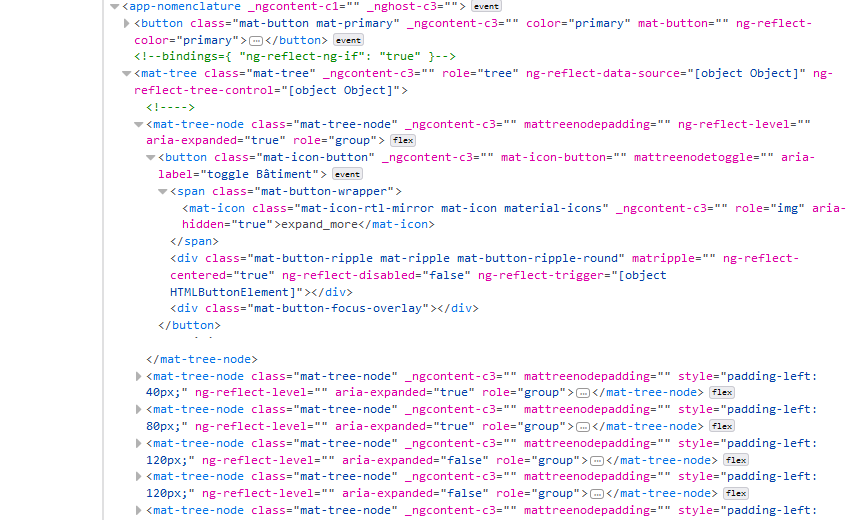Flat tree :
In a flat tree, the hierarchy is flattened; nodes are not rendered inside of each other, but instead are rendered as siblings in sequence
Nested tree :
In Nested tree, children nodes are placed inside their parent node in DOM. The parent node has an outlet to keep all the children nodes.
I have an 800 elements nomenclature that I display using a flat tree.
I tried using a nested tree first, because it seemed like the most appropriate tree. It takes a blink to build it, but the DOM needs 5 seconds to load the tree, so I tried the flat tree, and it works perfectly now.
The question is, what is the point of using a nested tree if the flat tree's result is the same ? The tree is rendered correctly and the DOM understands its hierarchy.
Flat tree's DOM:
A nested tree is harder to build and clearly overloads the DOM everytime it gets displayed. What can a nested tree do, that a flat tree can't ? The Material doc is unclear.

